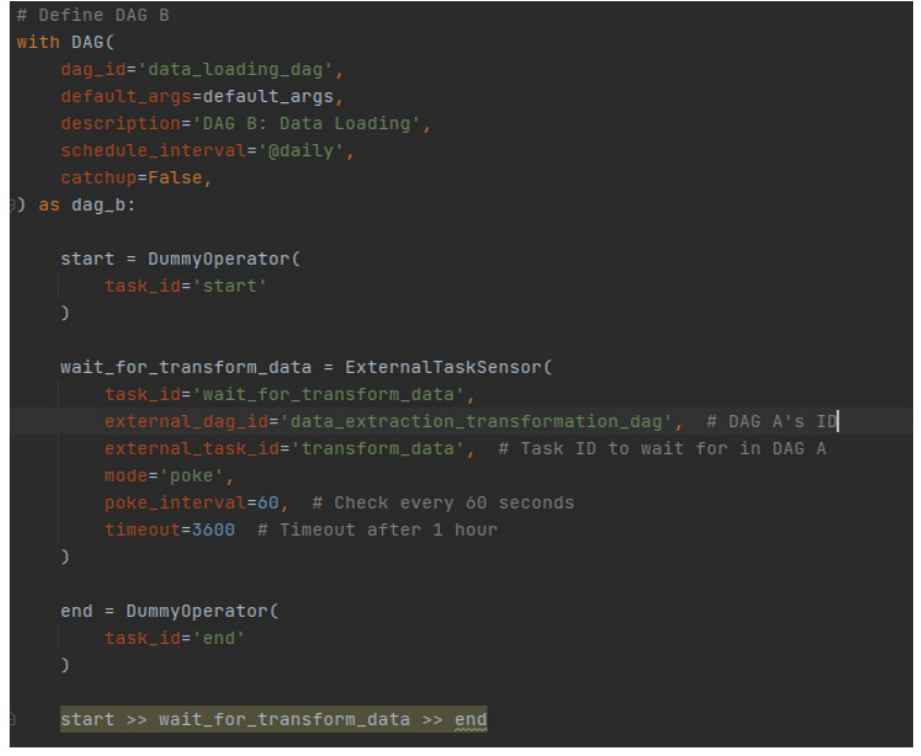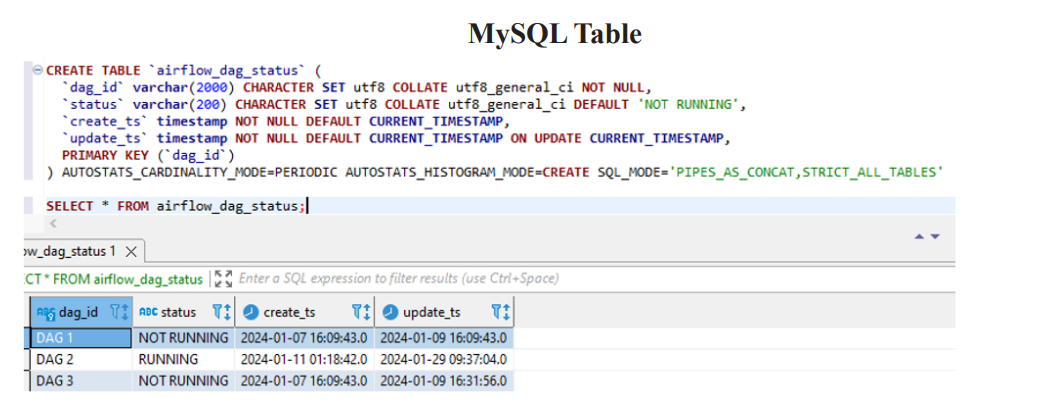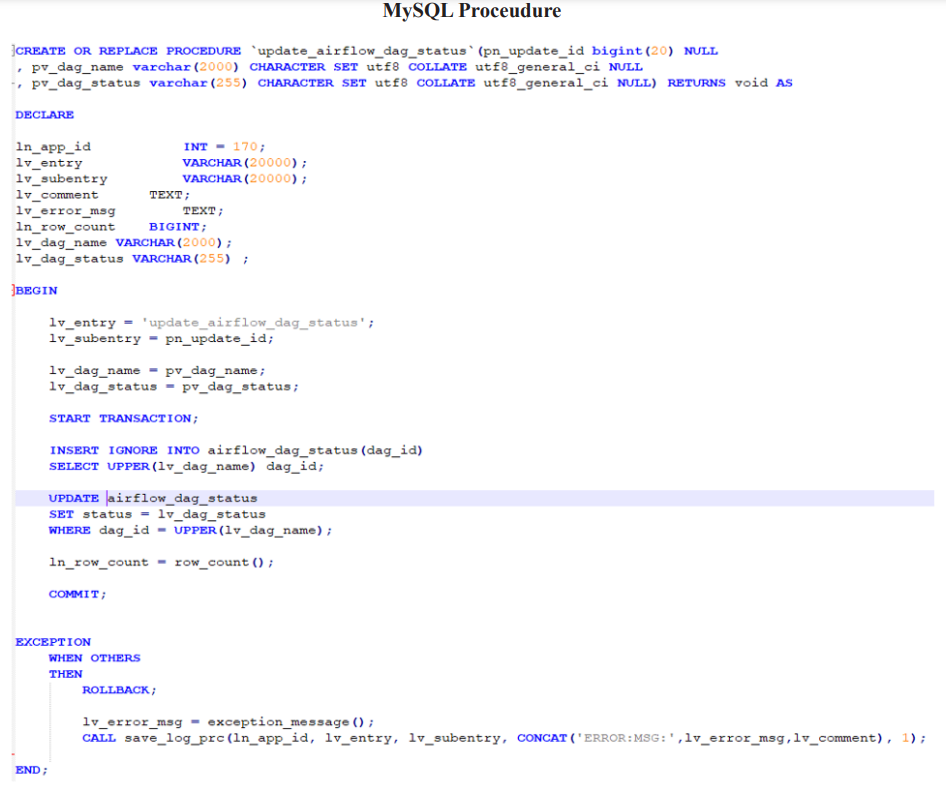Author(s): Pankaj Dureja
It covers a guiding light on approaches and resolutions for managing dependencies amongst multiple Directed Acyclic Graphs (DAGs) in Apache Airflow (a trending work automation tool). Cross-DAG dependencies is one of the crucial requirement for to manage the very complex workflow which can span in different processes and different systems. Through this research we implement basic operators including ExternalTaskSensor and TriggerDagRunOperator, custom solutions like using MySQL DB able to keep track of running DAGs. This study demonstrates the pros, possible bespoke solutions and implications of these solutions for optimizing workflow automation through Apache Airflow. The paper concludes by providing an analysis of how well DAG dependency management is done in Airflow and provides possible roadmap.
With the rise of data-driven organizations, Apache Airflow has made it a go-to tool to orchestrate complex workflows. This is where Airflow comes in, with the capability to script, schedule, and visualize all parts of workflow it lends itself to orchestrating arduously detailed data processing pipelines. In Airflow, every workflow is a Directed Acyclic Graph (DAG) where every node is a task, and the edges define the dependencies between tasks. Although Airflow is good at managing tasks inside a single DAG, in reality, need dependencies between multiple DAGs to deal with more complex and intertwined processes.
Many data-driven environment of works are not sitting as silos. Rather, they are a part of a bigger system where completion of one workflow would kick off another. So, with the above pattern, there are separate DAGs for extract, transform and load in an ETL process. In order to get these DAGs working together it is also needed to set up dependencies across these DAGs to make sure each step is executed in the right order. It does information co-ordination is essential to maintain data integrity for fast access to data.
To enforce this global scheduling constraint, we need to rely on cross-DAG dependencies to make sure that the DAGs get executed in the correct order, cooperate in a proper way and, thus, optimize the entire operations and reliability. Workflows may break up when dependencies in the software are not maintained, this may cause errors, delays, and other inefficiencies. E.g., if a data loading DAG starts before the data transformation DAG completes, it might also load incomplete/incorrect data into the target system. Therefore, handling these dependencies is critical to data processing with ease and without errors.
In this paper, we explore methods, and operators that can be used to handle dependencies among multiple DAGs in Airflow. From common methods like the ExternalTaskSensor and TriggerDagRunOperator, to more ad hoc approaches such as databases to monitor dependencies and control running workflows. In this article, we hope to cover these approaches, and compile a guide on how to orchestrate complex workflows that span multiple DAGs from running seamlessly and efficiently.
Managing dependencies within a single DAG in Airflow is straightforward, but coordinating tasks across multiple DAGs presents several challenges. Without proper mechanisms to establish and manage these dependencies, workflows can become disjointed, leading to errors, delays, and inefficiencies. Organizations need a comprehensive solution that allows for seamless integration and synchronization of tasks across different DAGs. The absence of such a solution can result in fragmented workflows, increased manual intervention, and difficulties in troubleshooting and maintaining the data pipelines.
To address these challenges, this paper implements a solution using various operators and customized approaches in Apache Airflow:
Following library needs to imported in the DAG:
In the below python implementation of DAG, wait_for_ transform_data task will run when transorm_data task will be completed in external data_extraction_transformation_dag.

Use Case: Ensuring that a data processing task in DAG A only starts after a data extraction task in DAG B is complete.
The ExternalTaskSensor Operator may encounter issues in a distributed setup with multiple Celery nodes, as it relies on the metadata database for task status, leading to potential synchronization problems if different nodes are not properly synced.
In the below python implementation of DAG, external dag trigger_production_load_complete_dag will be executed once combined_count_email_task completes within the DAG.

Use Case: Automatically starting DAG B once a critical task in DAG A is completed.
The TriggerDagRunOperator does not wait for the triggered DAG to complete before moving on to the next task. For instance, in the following line of Python code, There are two external DAGs to be triggered: `trigger_production_load_complete_dag` and `trigger_production_load_aggregate_dag`.
last_task >> combined_count_and_email_task >> send_email_task >> trigger_production_load_complete_dag >> trigger_ production_load_aggregate_dag >> end
The TriggerDagRunOperator triggers `trigger_production_load_complete_dag` and then immediately proceeds to trigger `trigger_ production_load_aggregate_dag` without waiting for the first DAG to complete.
3.Custom MySQL Table & Procedure for DAG Status: In order to solve the problem of ExternalTaskSensor and TriggerDagRunOperator, a custom solution where a MySQL table is used to update the running status of a DAG. Other DAGs query this table to check if a specific DAG is running, using stored procedures to manage the checks.
Following library needs to imported in the DAG:
from airflow.providers.mysql.operators.mysql import MySqlOperator


Using MySQL Hook, dependencies can be checked, and if the DAG is already running, the waiting DAG can enter sleep mode for 2 minutes until the condition is satisfied.
Use Case: A DAG updates its status in a MySQL table upon start and completion. Other DAGs query this table using a stored procedure to check the status, sleeping for 2 minutes before rechecking if the desired status is not yet achieved.
The solutions for managing dependencies between multiple DAGs in Airflow can be extended to various other scenarios:
The implementation of these solutions has a significant impact on the efficiency and reliability of workflows involving multiple DAGs. Airflow takes care of this coordination instead of saying "run this workflow, then this workflow, etc," using Airflow can establish cross-DAG dependencies, ensuring that workflows are run in the correct order with minimal manual intervention. As a result, workflow get minimal error, better task synchronization, and resource utilization. Increased visibility and control of the entire workflow allows for greater operational efficiency and ease of troubleshooting and maintaining the data pipelines.
The purpose of this paper is to dig into creating and managing DAG Dependencies between multiple DAGs in Apache Airflow. While the article does not go much into the advanced topics like Airflow architecture optimization or security considerations, it covers the implementation details, benefits and some potential use cases. In any event, future research will likely explore these other dimensions as well, in order to arrive at a more complete elasticity picture of how Airflow handles sophisticated workflows [1-5].
DAG dependencies are important to manage workflows across different processes as we can create multiple DAGs to represent different steps in our process. The operators, as well as the custom solutions presented in this paper, for example, ExternalTaskSensor, TriggerDagRunOperator, the DAG status tracking in MySQL table, supports easy DAG coordination, and guarantees workflow execution. Through these solutions, enterprises can establish deep automation, enhance task scheduling and streamline workflows. This aspect signifies the talent and applicability of these techniques across diverse domains and the promise of future extended use cases that might be uncovered.
